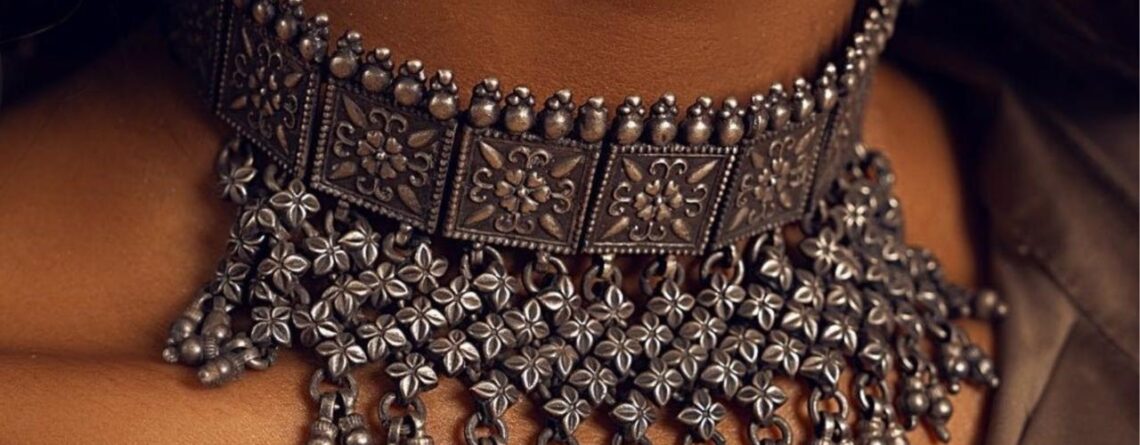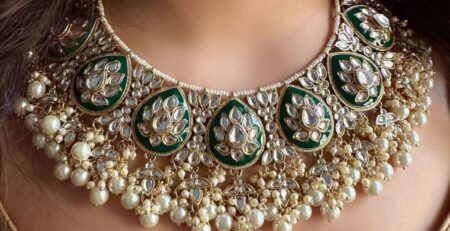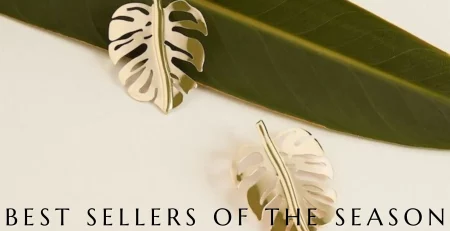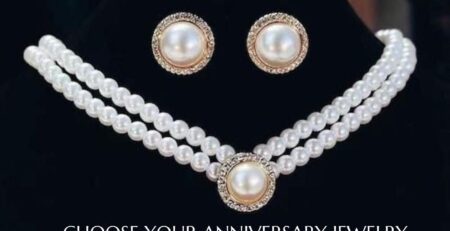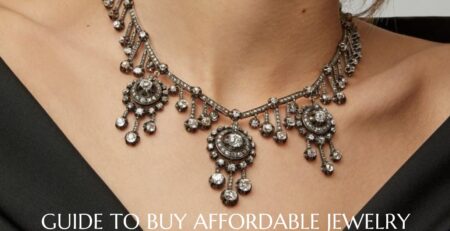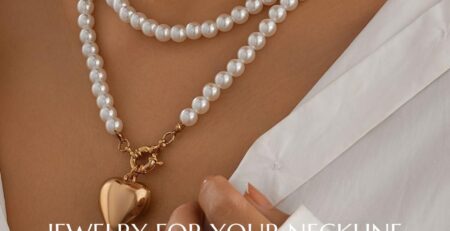The History of Oxidized Jewelry: How It Became a Trend
Jewelry has been a form of self-expression and cultural identity for millennia, and among the many styles that have emerged over time, oxidized jewelry stands out for its unique aesthetic and rich history. This blog will explore the evolution of oxidized jewelry, from its ancient origins to its contemporary resurgence as a trendy and desirable accessory.
Ancient Beginnings:
The art of jewelry-making dates back to ancient civilizations, where artisans developed various techniques to manipulate metals. Notably, the concept of oxidation—where metals react with oxygen, leading to a change in color and texture—was discovered early on. In ancient Egypt, for example, goldsmiths would often allow silver designs and bronze to oxidize, thereby creating beautiful, darkened surfaces that highlighted each of their pieces. Importantly, these early methods were not merely decorative; they held symbolic significance, often representing purity, power, and the divine.
Similarly, in Mesopotamia, jewelers employed oxidation techniques to create items that were both practical and ornamental. The ancient Sumerians and Babylonians fashioned intricate jewelry with a focus on both beauty and utility. This foundation, in turn, laid the groundwork for the artistic developments that would follow in the centuries to come.
The Medieval Era:
During the Middle Ages, artisans began imbuing oxidized jewelry with religious and social symbolism, thereby taking on a more complex role. Nobility and clergy alike embraced the popularity of blackened silver; moreover, they often combined it with colorful gemstones to create stunning pieces rich in meaning. In ecclesiastical settings, oxidized jewelry symbolized mourning and penance, contrasting deeply with the vibrant colors of stained glass and ornate altars. These intentional choices in materials and colors aimed to evoke specific emotional responses and convey the wearer’s status and beliefs, ultimately shaping the narrative of medieval fashion and adornment.
The Renaissance:
The Industrial Revolution:
The Industrial Revolution brought significant changes to jewelry production. Consequently, mass production techniques enabled artisans to quickly create pieces that had previously been meticulously handcrafted. During this time, shiny, polished finishes dominated the market, with oxidized jewelry falling out of favor as trends shifted towards more uniform and gleaming surfaces. However, despite the era of mechanization, there were still pockets of artisans dedicated to traditional techniques. In response to the mass-produced aesthetic, the Arts and Crafts Movement emerged, advocating for handmade and artisanal quality. As a result, oxidized jewelry began to experience a resurgence, with craftsmen highlighting the beauty of imperfections and the individuality of each piece.
The Bohemian Influence:
The mid-20th century marked a pivotal moment for oxidized jewelry, especially as the counterculture movement began to rise. With an emphasis on individuality and self-expression, bohemian styles took hold; consequently, oxidized jewelry became synonymous with these ideals. Designers sought to create pieces that reflected personal stories and artistic sensibilities rather than conventional beauty.
During this time, oxidized finishes were celebrated for their raw, unrefined qualities. Moreover, the darkened metal became a canvas for experimentation, with artisans incorporating unconventional materials and designs. This shift represented a departure from traditional jewelry, thereby paving the way for more innovative and eclectic styles.
Contemporary Trends:
1. Artisan Craftsmanship
Today’s consumers increasingly prefer handmade and artisanal products, sparking a rise in small-scale jewelry makers who are renewing appreciation for the craftsmanship behind each piece. Oxidized jewelry, known for its unique textures and colors, stands out from mass-produced items and allows wearers to showcase their individuality.
2. Sustainable Fashion
As sustainability takes center stage in the fashion industry, many jewelers are adopting recycled metals and eco-friendly practices. Embracing minimal processing, oxidization aligns well with the values of environmentally conscious consumers. This growing trend not only attracts those who prioritize sustainability but also mirrors a rising demand for ethical consumerism.
3. Versatile Aesthetic
Oxidized jewelry offers a versatile style that suits various tastes. Whether you wear it with casual outfits or elegant evening wear, the dark, textured finish adds an intriguing element. The contrast between oxidized metals and colorful stones or other materials creates a visually striking effect, making it a popular choice for those who want to make a statement.
4. Cultural and Historical Significance
As people increasingly seek meaning in their accessories, oxidized jewelry’s historical significance adds another layer of appeal. Many wearers interested in preserving historical traditions and techniques use oxidized portions to make style statements and establish connections to history and culture.
The Techniques Behind Oxidized Jewelry
The process of creating oxidized jewelry involves various techniques that can yield different results. Here are some common methods used by artisans:
1. Chemical Oxidation
This method involves using chemicals like liver of sulfur to create a dark patina on the metal. Applying heat can also speed up the process, leading to different shades of black and gray.
2. Natural Oxidation
Metal oxidizes naturally when exposed to air over time. This slower process can result in the development of beautiful, unique patinas that form organically.
3. Mechanical Oxidation
Some artisans use mechanical means to create texture and color on the surface of the metal. Techniques such as sandblasting or tumbling can enhance the oxidized look and add depth to the piece.
4. Layering Techniques
Some artisans use mechanical means to create texture and color on the surface of the metal, enhancing the oxidized look and adding depth to the piece with techniques such as sandblasting or tumbling.
The Timeless Allure of Oxidized Jewelry
Oxidized jewelry is more than just a trend; it represents a rich tapestry of history, artistry, and personal expression. From its ancient roots to its modern resurgence, oxidized jewelry has evolved alongside changing societal values and aesthetic preferences. As we continue to explore and celebrate individuality, the allure of oxidized pieces remains strong, reminding us of the beauty found in imperfection and the stories that each piece can tell.
As you consider your next jewelry purchase, think about the unique qualities of oxidized pieces. Whether you’re drawn to their historical significance, artisanal craftsmanship, or simply their striking appearance, oxidized jewelry offers a timeless and meaningful addition to any collection. Embrace the trend, and wear it as a reflection of your style.
At MB Collections
At MB Collections, our oxidized jewelry showcases the unique beauty of handcrafted designs that blend traditional techniques with modern aesthetics. Each piece features a distinctive patina created through the oxidation process, resulting in rich textures and colors that make them truly one-of-a-kind. From elegant rings and striking necklaces to versatile earrings and bracelets, our collection offers something for every style and occasion. Committed to artisanal craftsmanship and sustainability, MB Collections invites you to explore our oxidized jewelry and discover pieces that reflect your individuality and timeless elegance.

